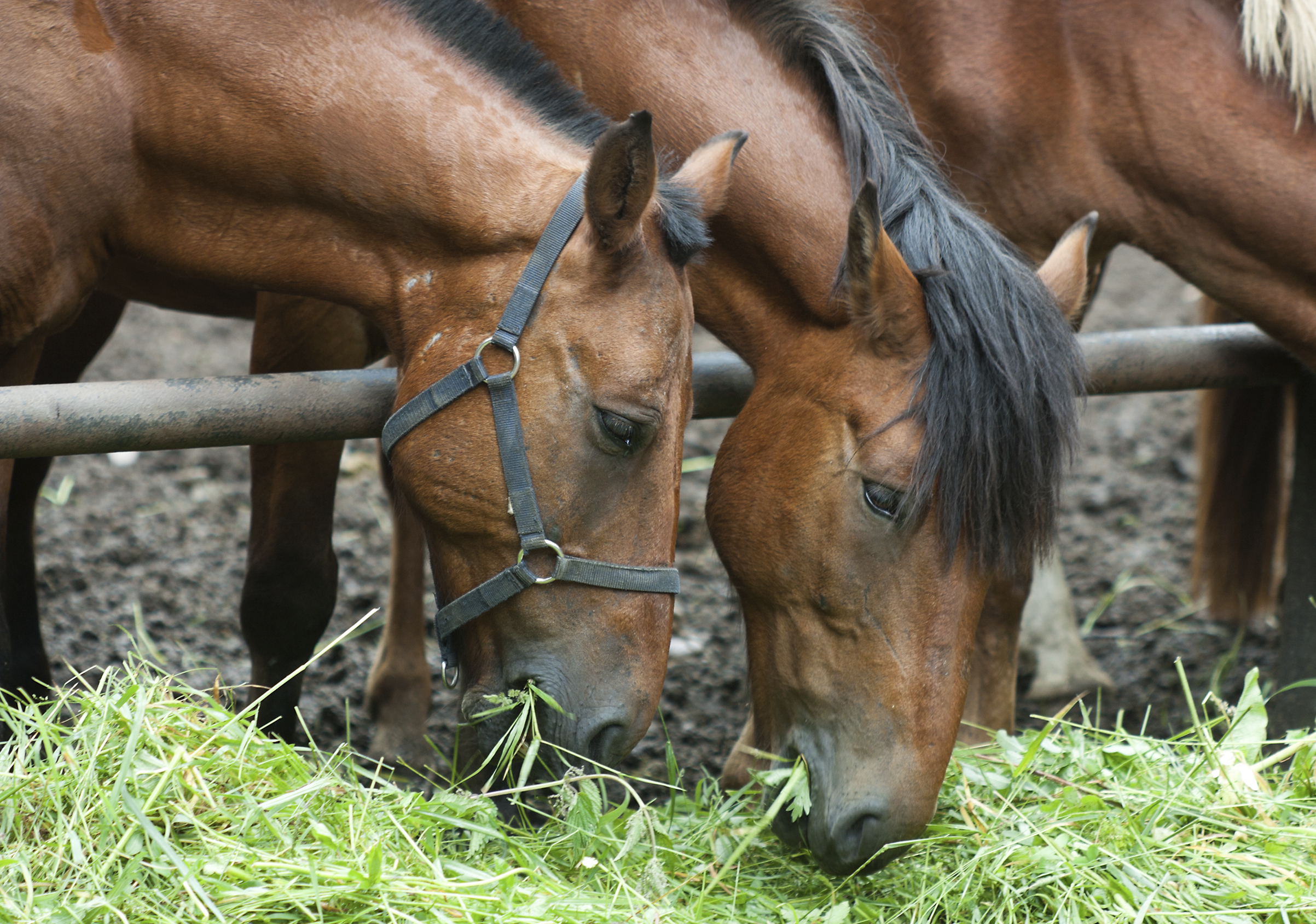
by Sally Flis, Ph.D., Feed and Crop Support Specialist, Dairy One
Chemical analysis of your hay or hay you are going to purchase is an important part of feeding it, but there is quite a bit you can get from a physical inspection of the hay that will give you an idea of the quality of the hay.
There are 6 things to look at when doing a physical inspection of a hay lot: color, smell, maturity, moisture, leafiness, and weed presence. It is best to open up a bale and dig through it when doing the physical evaluation. If that is not possible then make sure to reach into the bale as far as you can for a sample. Roam around the bales in the lot to see how similar they all are.
Color – A bright green hay indicates that a hay was cut at a relatively early stage of maturity; rapidly and properly cured, with no damage from rain, molds, or overheating during storage. Light green or faded hay is often due to sun bleaching and is generally not a concern for quality.
Colors in hay that should be avoided are: Yellow – stems and seed heads in over mature hay will be yellow; Brown – can be over mature hay or heat damage; Black – rain or heat damaged; and Grey or White – heat damage or mold growth.
Smell – Avoid hay with musty or moldy smells. This hay can be less palatable and can indicate other quality problems. This can come from poorly cured hay, rain damage, or poor storage. Hay should not be purchased or fed if you can see mold when you open the bale.
Maturity – The maturity of the components of the hay is the most important factor affecting quality, primarily fiber and crude protein concentrations. As maturity of the crop increases fiber content will increase and crude protein will decrease.
Alfalfa – presence of buds and flowers, the texture and woodiness or stems, and level of leafiness will indicate the maturity. More mature alfalfa will have flowers and heavier stems. The highest quality alfalfa was cut at bud stage and no flowers should be present and the stems will be pliable.
Clovers –color and condition of the blossoms will give an idea of maturity. High quality clover hay has numerous red or purplish-red blossoms (red clover) or pinkish-white to white blossoms (white or alsike clover). Heads that are yellowish-brown to brown are more mature and some quality has been lost.
Grass – presence of full seed heads is an indicator of hay harvested too mature. Hay harvested at the proper maturity will have seed heads still in the boot stage (not visible).

Moisture – If the hay has been recently harvested you may still be able to feel some moisture in the hay and determine if it is going to get moldy when stored for longer. If the hay feels damp be sure to ask about the use of a preservative and the harvest date.
Weeds or Foreign Materials – Examine the hay for the presence of weeds – dandelion, milk weed, or thistles among others are common in dry hays. Also look for sticks or wires that could make the hay dangerous to animals while consuming.
You should never buy hay that you have not examined at the farm or before it is unloaded at your farm. A reputable hay seller will not be hesitant to have their product inspected before purchase.
The next step is to take a sample for forage quality to see if the hay meets your feeding needs. Or better yet, ask the seller to provide you with a hay analysis report at the time of purchase so that you can 1) Complete a physical inspection as outline above and 2) Assess the true nutritional value based on the analysis.
Sally Flis, Ph.D. is the Feed and Crop Support Specialist for Equi-Analytical Laboratories. Equi-Analytical specializes in the most modern techniques for determining the nutrient content of forage and feed for horse owners.
Contact Sally at sally.flis@dairyone.com or 607-229-5337. Learn more at www.equi-analytical.com.

































